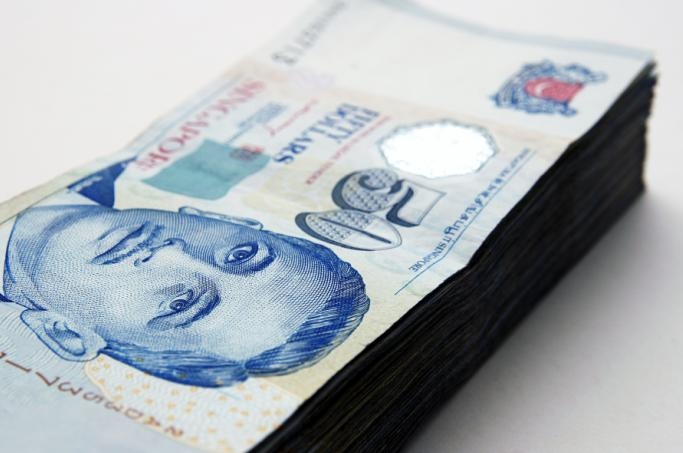
Singapore dollar sits above $1.28 level
The local currency has sat above the $1.25 level for almost two months and is unlikely to regain this level, says IG markets Singapore.
IG Markets Singapore said:
The Singapore dollar still sits uncomfortably above the $1.28 level this morning as Wall Street and European bourses slid last night.
This week’s chapter in the eurozone misery may centre on the downgrading of 28 Spanish banks, which has affected risk sentiment towards currencies.
The local currency has sat above the $1.25 level for almost two months and is unlikely to regain this level with such much nervousness concerning the eurozone crisis.
Despite attempts by the Monetary Authority of Singapore (MAS) to appreciate the Sing Dollar, this is going to be an uphill battle in the present climate with the greenback seeing huge safe-haven flows.
Inflation has eased in Singapore to 5% for May but still remains at a high level and will support the MAS’s stance in appreciating the local currency to tackle rising prices.
BK Asset Management meanwhile noted (for 25 June 2012 trading):
Concerns about Europe drove investors back into the arms of safe haven currencies. Both the U.S. dollar and the Japanese Yen performed extremely well today with the latter appreciating against all other majors.
The weakness of USD/JPY confirms that risk aversion dominated trading as investors shrugged off the upside surprise in U.S. data. Sales of new home sales in the U.S. was the only piece of important economic data on the calendar today. According to the latest report, new home sales rose 7.6 percent to 369k in the month of May. This was the highest amount of homes sold since Nov 2009.
The supply of new homes also dropped to its lowest level since October 2005. While this data is very encouraging, it is important to realize that inventory is only moving because prices are dropping. The recovery in the housing market is expected to continue to lag the recovery in the broader economy and for this reason the improvement in new home sales will not soften the case for QE3.
Consumer confidence and the Richmond Fed manufacturing index are due for release tomorrow. Given the sharp decline in sentiment reported in similar surveys conducted by Investors Business Daily and the University of Michigan, there is a good chance that tomorrow's report will confirm that consumers grew less pessimistic in the month of June.
As for the manufacturing sector, weakness in the Empire State and Philadelphia regions signals a broad based slowdown in the sector that will most likely hit the Richmond area as well.
Overall, like new home sales, none of these reports are expected to diminish the chance of another round of asset purchases from the Federal Reserve.
RBS, on the other hand, reported (for 25 June 2012 trading):
On a day with little to focus on ahead of the EU Summit meeting this Thursday and Friday, G10 FX was relatively quiet with the USD holding onto most of its overnight gains as currencies held essentially in tight ranges.
AUD/USD tested back below parity before moving just above parity into the close, and with our estimate of short-term fair value currently just below 0.99, we believe there may be further downside in the near-term.
Last week's softer than expected CPI report and news that the decision not to ease monetary policy further in June was closer than expected, suggest a further £50bn of asset purchases at the July MPC meeting.
Market interest rates for the UK have slipped against most other G10 currencies. We believe that this will be a negative environment for GBP. However, with concerns around the Euro area policy response looking set to remain, we believe that GBP/USD has more downside than EUR/GBP has upside. We currently hold short GBP/USD exposure.
























 Advertise
Advertise






